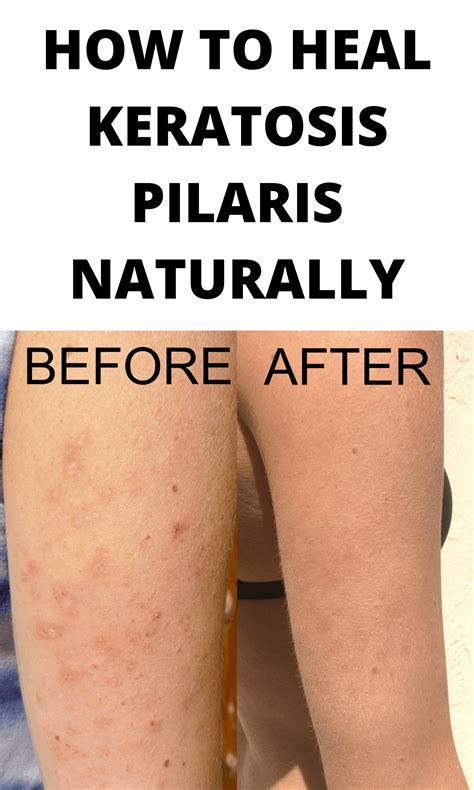How To Get Rid Of Keratosis Pilaris: A Comprehensive Guide
Keratosis pilaris (KP), also known as "chicken skin," is a common, harmless skin condition that causes small, rough bumps on the skin. While it's not harmful, many find it unsightly. This guide will explore effective ways to manage and potentially lessen the appearance of keratosis pilaris.
Understanding Keratosis Pilaris
Before diving into treatment, let's understand what causes KP. It's a result of keratin, a protein that protects your skin, building up and clogging hair follicles. This blockage creates the characteristic bumps, often on the upper arms, thighs, cheeks, and buttocks. Genetics play a significant role, making it more prevalent in families with a history of KP. While there's no cure, several methods can effectively manage its symptoms.
Effective Treatments for Keratosis Pilaris
Several approaches can help minimize the appearance of KP. Remember, consistency is key! What works for one person might not work for another, so patience and experimentation are crucial.
1. Exfoliation: The Cornerstone of KP Treatment
Regular exfoliation is arguably the most effective method to combat KP. This process removes the built-up keratin, unclogging pores and smoothing the skin. Consider these options:
- Chemical Exfoliants: Look for products containing alpha-hydroxy acids (AHAs) like glycolic acid or lactic acid, or beta-hydroxy acids (BHAs) like salicylic acid. These acids gently dissolve dead skin cells. Always start with a low concentration and gradually increase as your skin tolerates it.
- Physical Exfoliants: Gentle scrubs with fine particles can help remove dead skin cells. Avoid harsh scrubs that can irritate the skin. Look for options with natural ingredients like sugar or finely ground oatmeal. Be gentle! Aggressive scrubbing can worsen the condition.
2. Moisturizing: Keeping Skin Hydrated
Dry skin exacerbates KP. Consistent moisturizing is essential to keep the skin supple and prevent further buildup of keratin. Look for rich, hydrating creams and lotions containing ingredients like:
- Ceramides: These help repair the skin barrier.
- Hyaluronic acid: A powerful humectant that attracts and retains moisture.
- Shea butter: A natural emollient that softens and soothes the skin.
3. Topical Treatments: Creams and Lotions
Some topical treatments can specifically target KP. However, always consult a dermatologist before using any new topical treatment, especially those containing stronger ingredients. They can assess your skin and recommend the most suitable option.
4. Lifestyle Changes: Supporting Healthy Skin
While not a direct treatment, certain lifestyle changes can support healthier skin and potentially reduce the appearance of KP:
- Diet: A balanced diet rich in fruits, vegetables, and healthy fats can contribute to overall skin health.
- Hydration: Drinking plenty of water helps keep your skin hydrated from the inside out.
- Avoid harsh soaps and detergents: These can strip the skin of its natural oils, worsening dryness and KP.
When to See a Dermatologist
While KP is generally harmless, it's advisable to consult a dermatologist if:
- Symptoms worsen significantly.
- You experience pain or discomfort.
- You have concerns about the appearance of your skin.
- Home remedies aren't providing relief.
A dermatologist can offer personalized advice and potentially prescribe stronger treatments if needed.
Conclusion: Managing Keratosis Pilaris Effectively
Keratosis pilaris is a manageable condition. By incorporating a combination of exfoliation, moisturizing, and potentially topical treatments, alongside a healthy lifestyle, you can significantly improve the appearance of your skin and reduce the noticeable effects of KP. Remember patience and consistency are key. Don't hesitate to seek professional help from a dermatologist if you need guidance or stronger interventions.
